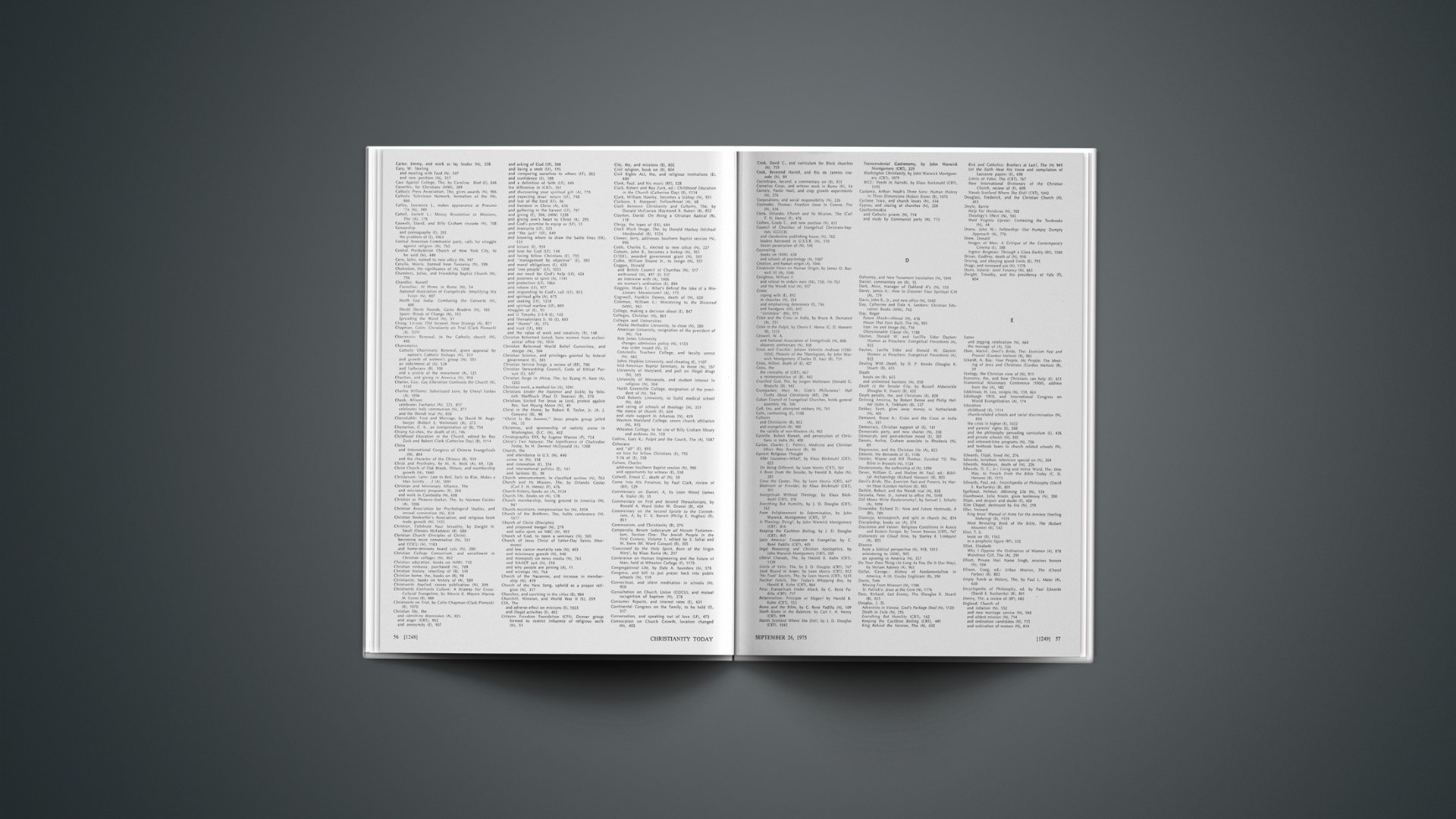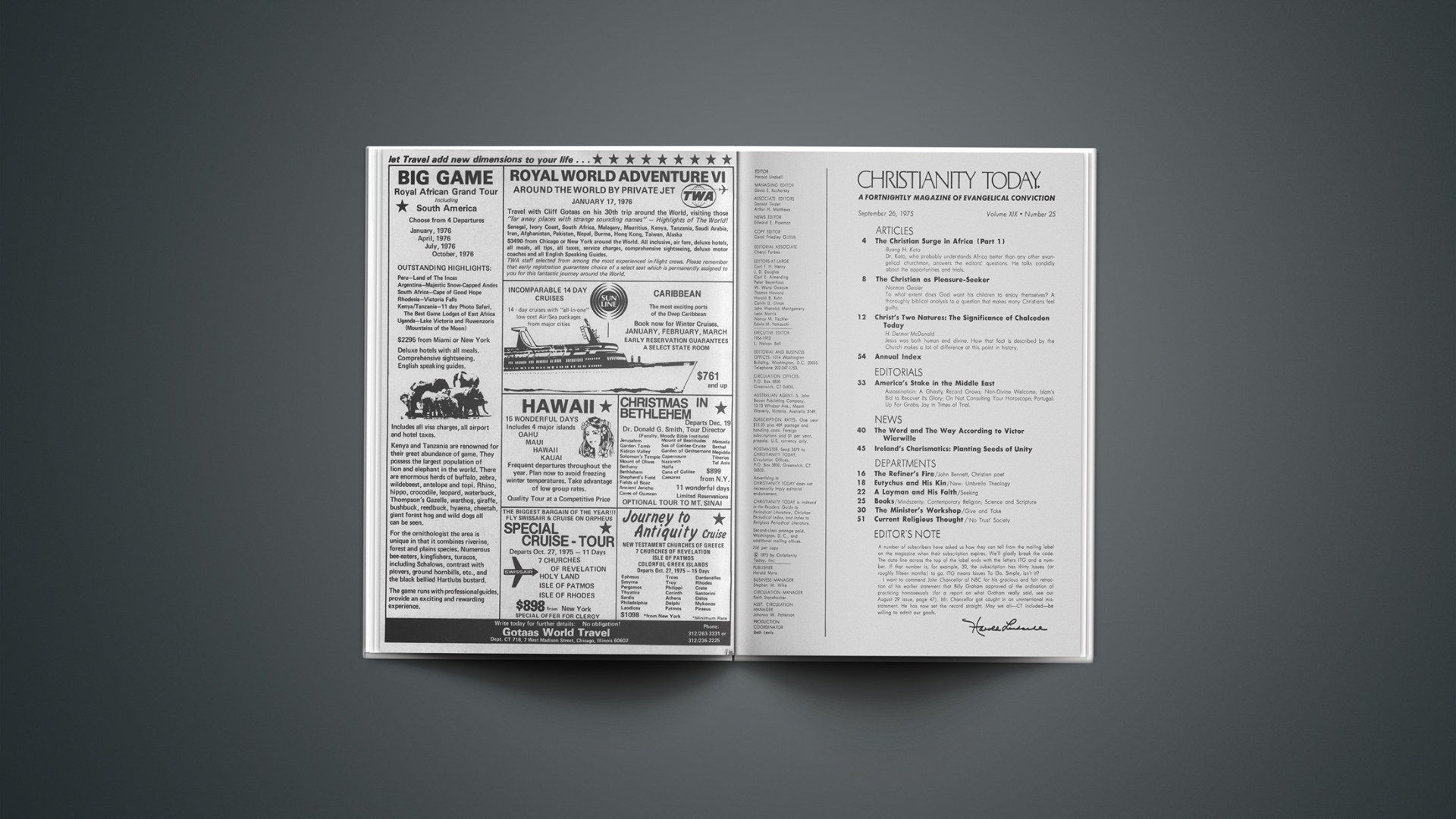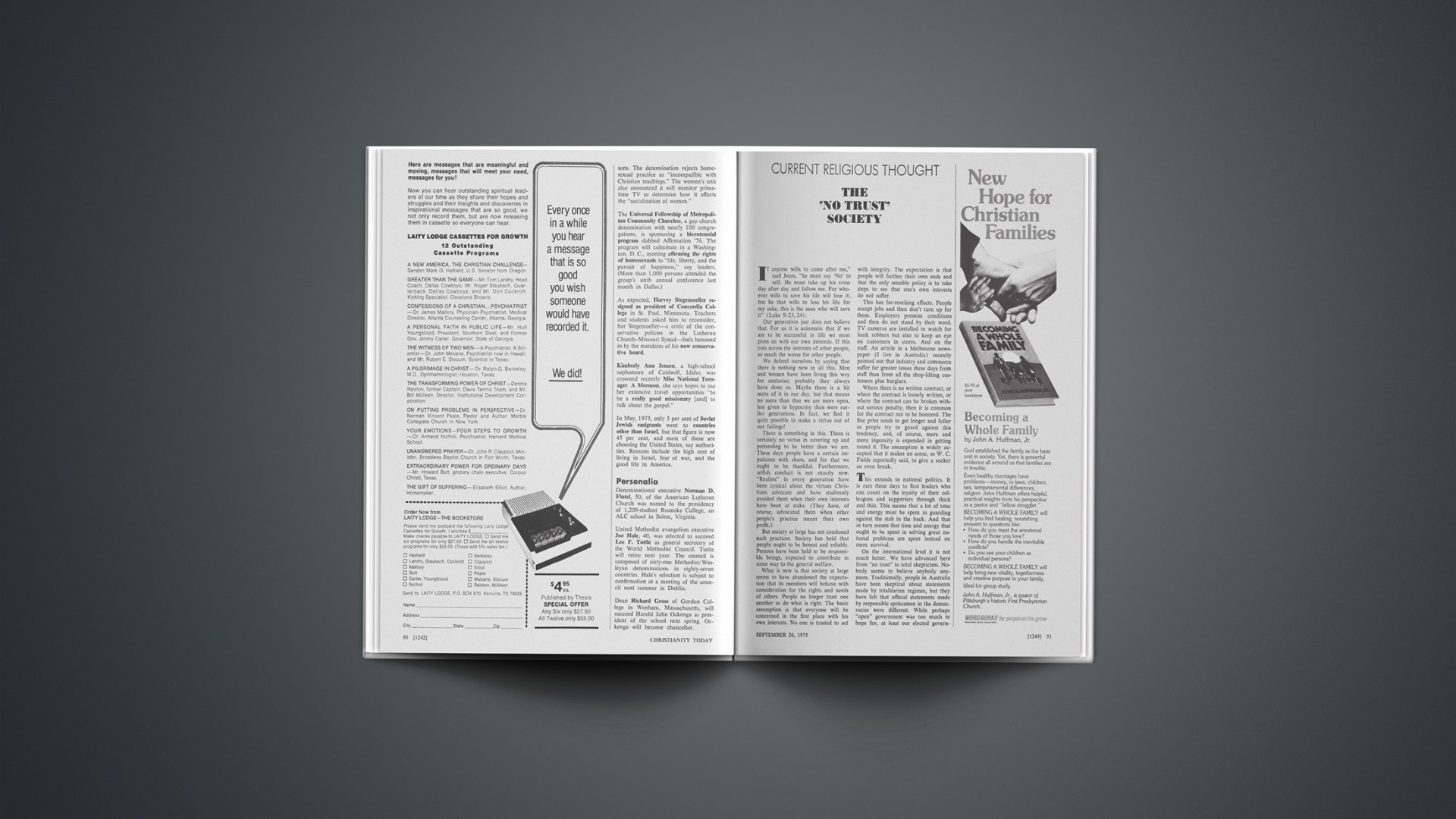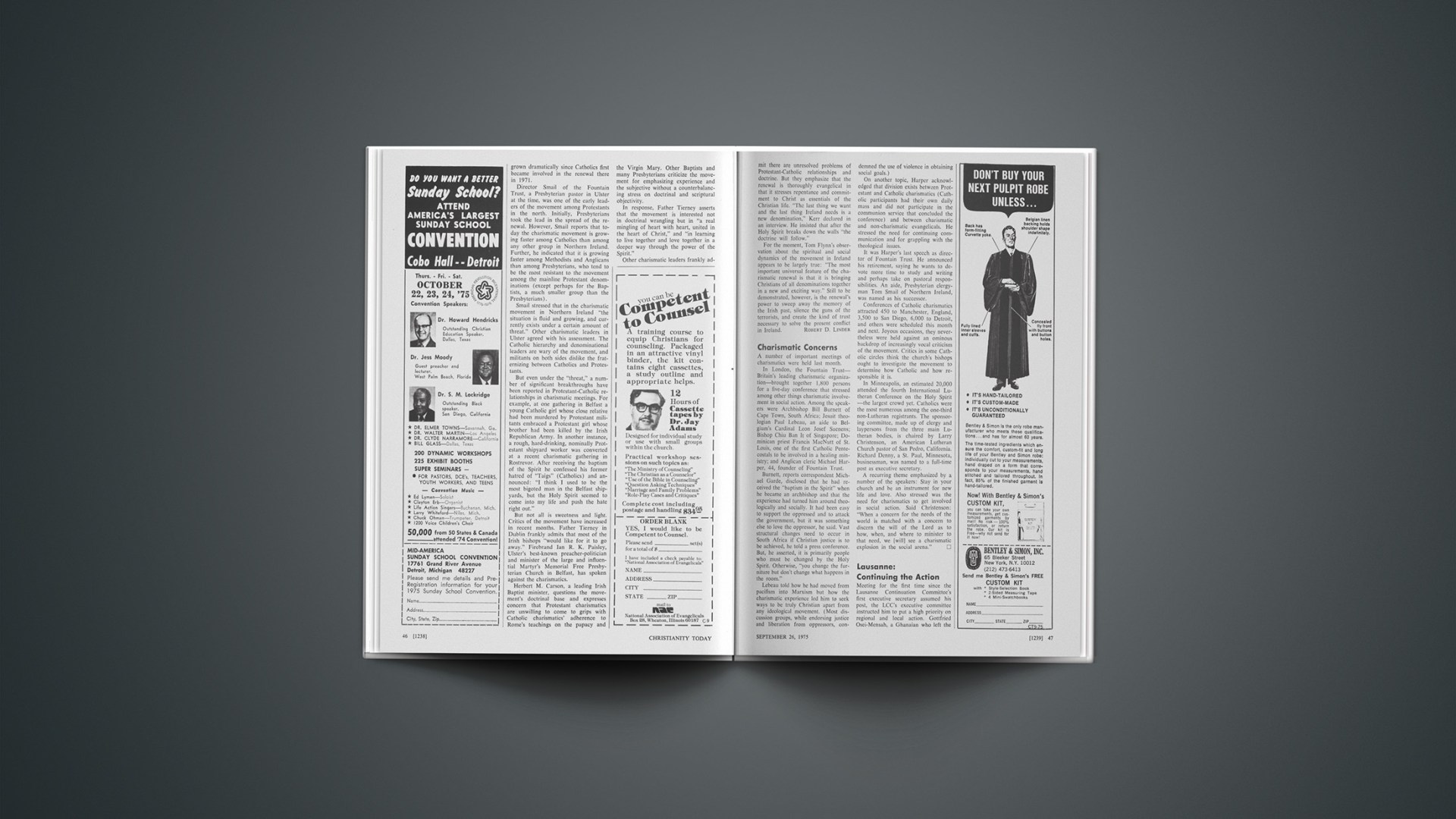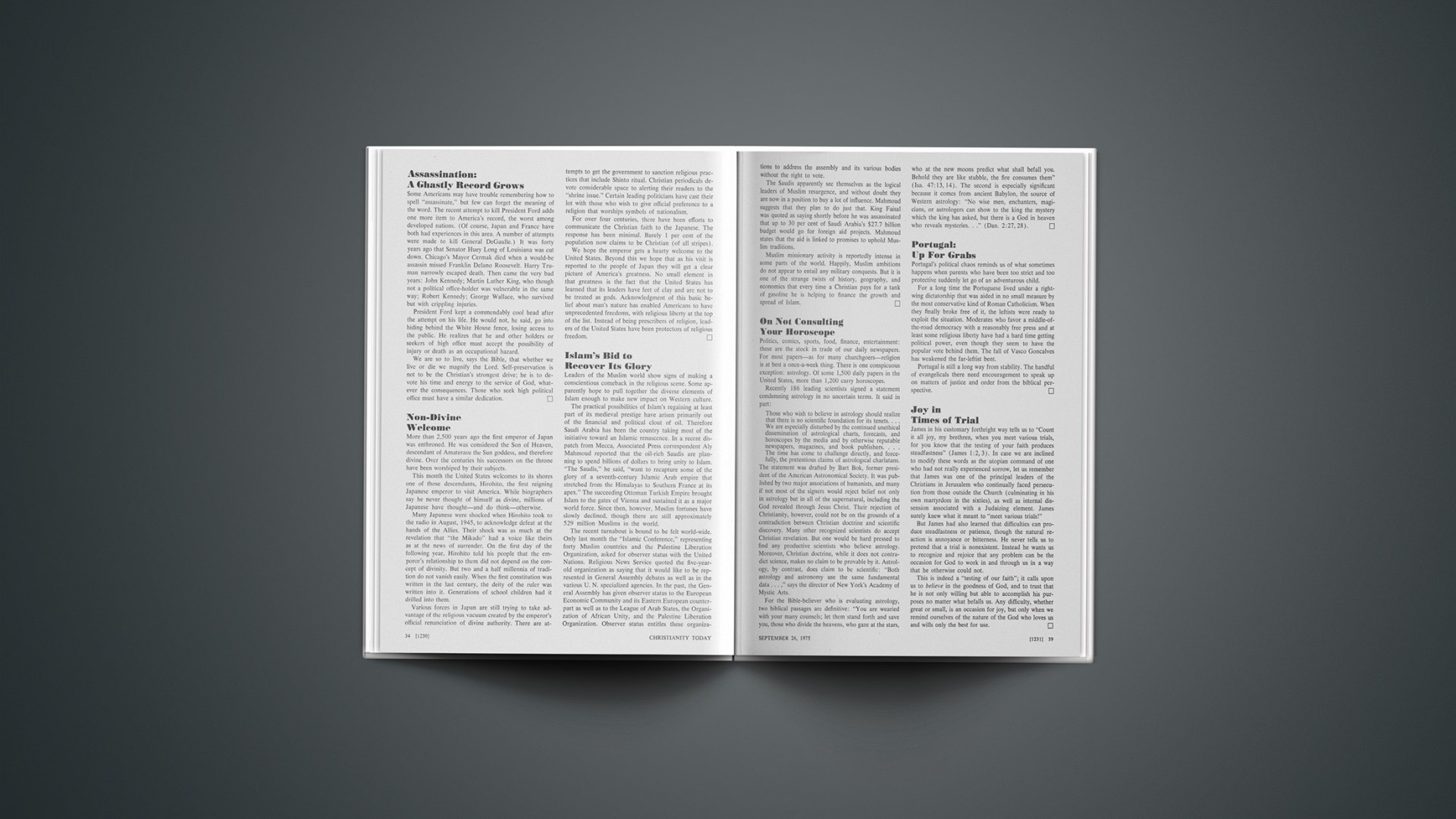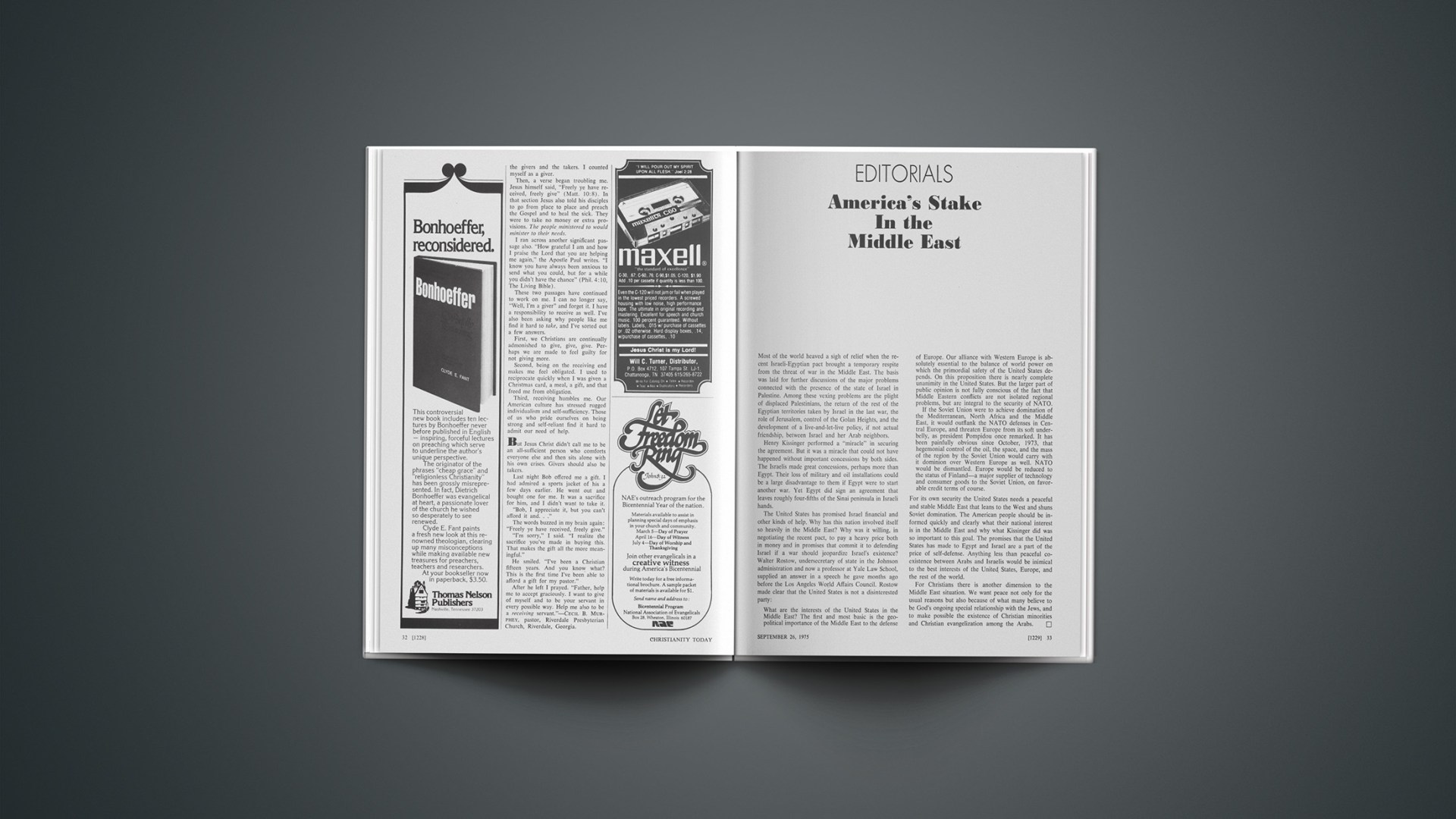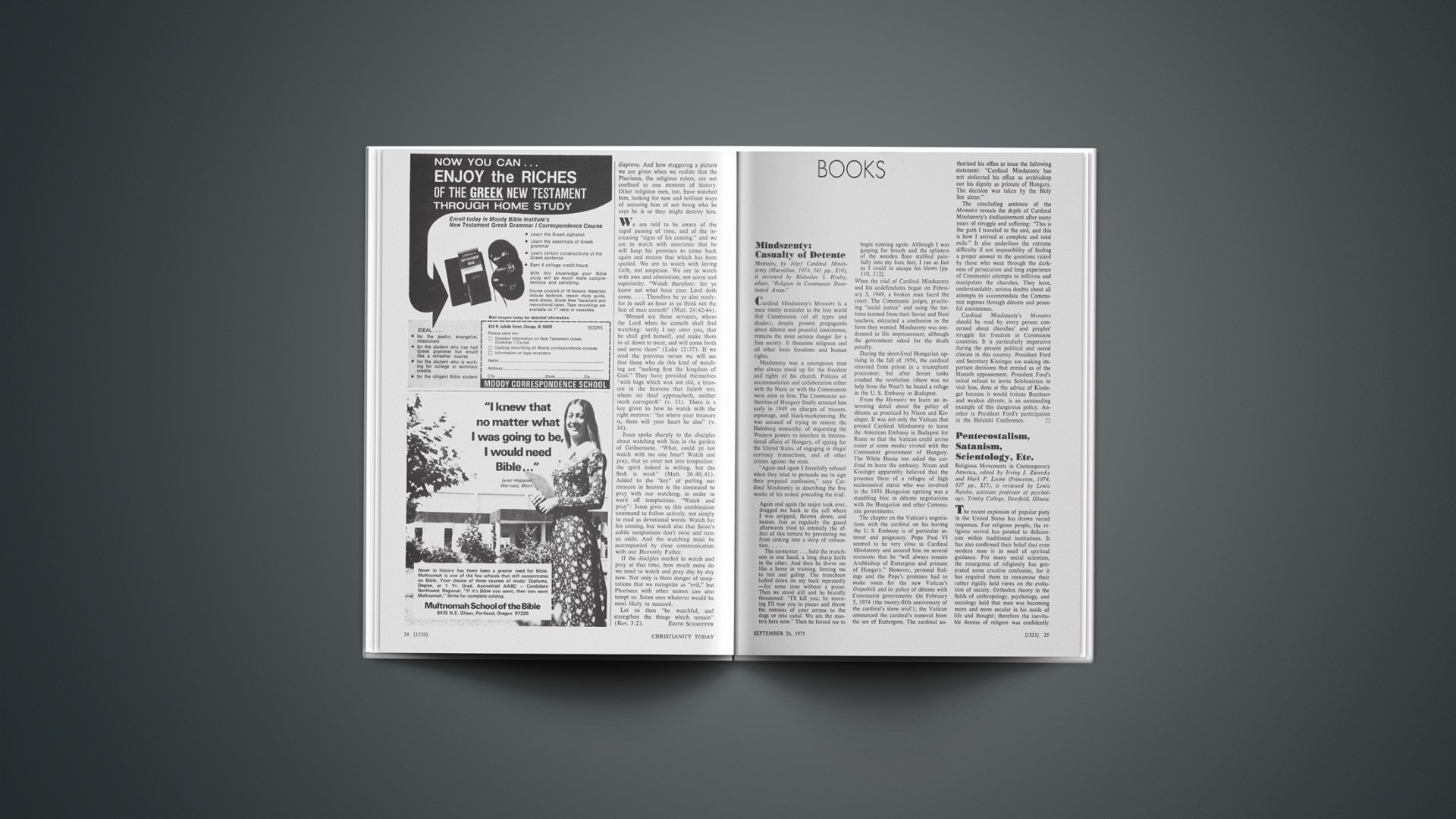A centenary look at ‘Science and Health’
Almost on an impulse, yet on the strength of a long-held curiosity, I went into a Christian Science Reading Room. It was in a neat looking brick building whose main door opened to a bookstore. Behind the counter was an attractive middle-aged woman with a warm smile and a friendly manner. A Christian Scientist for only a few years, she was beaming from the peace of mind she had found.
She offered to show me through the other rooms of the building. Next to the store was a comfortably furnished library. On one wall hung a large picture of Mary Baker Eddy, crowned with white hair that was set off by the dark coat and large fur collar she was wearing. The hostess paused at the picture and remarked on its beauty. A light came into her eyes, and it was apparent that she felt an intense gratitude to this leader of her faith.
In the one hundred years since Mrs. Eddy wrote her famous Science and Health With Key to the Scriptures, her teachings have permanently affected the lives of possibly millions of people. In thousands of homes the book lies next to the Bible as a spiritual aid that comforts and inspires. The dangerous doctrine that results makes a Scientist afraid to interpret the Bible without consulting the Eddy explanation. Science and Health is currently available in thirteen languages.
Mrs. Eddy insisted that her book was of divine origin, and it included the special “keys” that would unlock the inspired Scriptures. The volume includes a twenty-page glossary to explain what Bible words actually mean. For instance: angels are really God’s thoughts passing to man (p. 581). Death is an illusion, the lie of life (p. 584). The name Adam is two words, “a” and “dam,” and refers to obstruction or error. This type of logic results from her premise that we must substitute the spiritual for the material definition in order to elucidate the meaning of the inspired writers (p. 579).
The result of these mental gymnastics is a strange collection of highly unconventional doctrines. Man does not die and man was not born (p. 206). Man did not fall; it is only the Adam-dream (p. 282). Mind is God (p. 310). Christ died not to provide pardon for sinners but to demonstrate that the Master could overcome death (p. 24). The Comforter that John promised is Divine Science (p. 55).
Some of the tenets of Christian Science appear almost orthodox at first glance—e.g., man, made in God’s image, is “saved through Christ …”; but many of the words do not carry their usual meanings.
While it was not my guide’s experience, she confirmed the fact that most converts to Christian Science come for health reasons. They have tried conventional physicians and for one reason or another have not been helped. Then, turning to Christian Science, they believe they have been healed and consequently embrace it as a religion.
This is the way Mrs. Eddy herself came to her beliefs. After experiencing numerous disappointments and illnesses, she claimed to experiment with the power of God in her life. In 1866, when she was forty-five, she supposedly was healed from a serious accident after reading Matthew 9:2 and was given a special revelation. Her studies of the healings of Jesus helped lead her to this “spiritual influx” and are said to have raised her above the average Bible interpreter. Mrs. Eddy taught that the beginning of Christian Science was “unquestionably” the Second Coming of Jesus Christ.
My guide admitted that her own struggle over pain was not always easy, but she was firmly convinced that mind over matter was a spiritual reality. It seemed logical to her that since God, the creator of everything, is good, he could not create anything evil, and consequently there is no evil in the world.
I asked her if there would be pain if she hit her finger with a hammer. Not if she thought about good and noble things, she replied; but if she thought there was pain the finger would hurt.
Christian Science “practitioners” help heal the sick. Their names and addresses are listed in the telephone directories and in the Christian Science Journal. They charge a fee comparable to a physician’s fee. Practitioners attempt to help patients without resorting to material aids or medicine. Their main tools are praying, counseling, and recommending good literature designed to free the mind. From this approach they report all types of healings including the arrest of bone decay and the cure of grippe, hernia, varicose veins, and valvular heart disorders, to mention a few. (Later in her life—she died in 1910—Mrs. Eddy’s own control over pain evidently lessened; according to Sydney Ahlstrom, “as her health declined and attacks of renal calculi grew more frequent, morphine had to be administered at regular intervals” [A Religious History of the American People, p. 1,024].)
Qualified practitioners have presented testimony to the Mother Church in Boston as to their abilities. “C.S.” after a practitioner’s name means he has been instructed by an authorized teacher; “C.S.B.” means he has been taught in a normal class of the Christian Science Board of Education. Their field of purported expertise is broad and takes in the settling of strife, including racial conflict. Omaha, Nebraska, has twelve practitioners; Chicago, 102.
The library plays a large part in the healing ministry; reading the Bible, Mrs. Eddy’s writings and other metaphysical literature is thought to contribute greatly to the development of a sound mind and body.
My guide led me from the library into a small but appealing church auditorium. It had comfortable looking theater seats and a small platform with a pulpit. The room appeared to hold 125 people, and my hostess said that the normal congregation was probably 50. I was impressed at the financial sacrifice this structure would mean for so few people.
Many people hold a dual membership, belonging also to the Mother Church in Boston, the hostess explained. After one has been part of a local group for one year, one can apply for membership in the Boston church as a means of showing love and gratitude for Christian Science.
The Sunday-morning service in the local branch is simple and usually lasts less than an hour. There are no paid clergy; lay leaders read to the congregation. The first reader explains passages from Science and Health while the second reads from the Bible. The congregation may listen to a paid soloist, sing hymns, and pray silently. At the close of the service the congregation recites the Lord’s Prayer, stopping after each phrase for a reader to inject an interpretation by Mrs. Eddy.
On Wednesday nights there is a testimony service. Here people recount some of the things that Science has done for them. This important service is not to be neglected even for Christmas. Testimonies are used a great deal in Christian Science because they both encourage believers and attract new converts. The Scientists’ weekly radio program, “The Truth That Heals,” uses this format and includes accounts of healed marriages and personal tranquillity. Weekly the Scientists publish the Christian Science Sentinel, packed with testimonies of miraculous healings.
As I stood in the auditorium, I noticed an impressive quotation by Jesus in large black letters hanging on the right wall. But then I saw that hanging opposite it on the left was a similar quotation by Mary Baker Eddy. It would be difficult to overstate the authority that Mrs. Eddy holds in the Church of Christ, Scientist. While adherents are sure to point out that she is not considered to be equal to Jesus Christ, she is believed to be “infallible” (Braden, Christian Science Today, p. 240) concerning both religion and organization. Her Manualinsists on complete obedience and forbids any amendments without her written consent. Since she has been dead for sixty-five years the church is practically immovable. A Board of Directors is selected from the Mother Church in Boston, and these five are the sole interpreters of Mrs. Eddy’s writings. Although this rigidity has caused some friction in the church, the practice remains fixed.
The last room in the small complex to which my guide took me was the Sunday-school department, consisting of a number of tables for children and youths. Education is a major part of the Scientists’ program.
Another part of their teaching program is the large series of lectures—some 4,000 lectures per year throughout the world, given by members of the Board of Lectureship. The lecturer due to come the following weekend to this local group was from Minneapolis. The lecture is free and gives an excellent opportunity to invite friends and interested persons. The lecture titles include “Prayer-Power,” “What It Takes to Heal,” and “Become What You Are.”
My guide and I returned to the bookstore section, and I was impressed again by the large number of attractive publications available at reasonable prices. Even Mrs. Eddy’s venerable volume Science and Health is printed in an appealing paperback for $2.50.
On the floor stood a newspaper rack containing the Christian Science Monitor. Inaugurated in 1908 by Mrs. Eddy, the newspaper has won great respect from many quarters and may be the Scientists’ best form of publicity. It is published Monday through Friday and attempts to give as positive a slant as possible to the news. It was Mrs. Eddy’s intention that the paper would injure no one but would bless all mankind. It has correspondents all over the country. Each edition contains one column reflecting Christian Science doctrine, but otherwise the paper is comparable to the national news and features sections of secular dailies.
Further conversation with my patient hostess pointed up the fact that Christian Science is more than a healing ministry. Its theology is basically universalistic. There is no hell because hell is evil; God is good and God would not create evil. There is no heaven in the traditional sense but only the spirit world, which one enters when he is separated from his body. Consequently there is no death, though some transference may be necessary. Sin is unreal. Spiritual understanding will cast out evil, but we are punished by sin as long as the belief in it lasts.
After paying for a few pamphlets, I expressed my appreciation to my courteous guide and went on my way. She seemed so friendly and so content. I wondered how many people would walk into that same reading room and accept the teachings of Christian Science as God’s truth.




